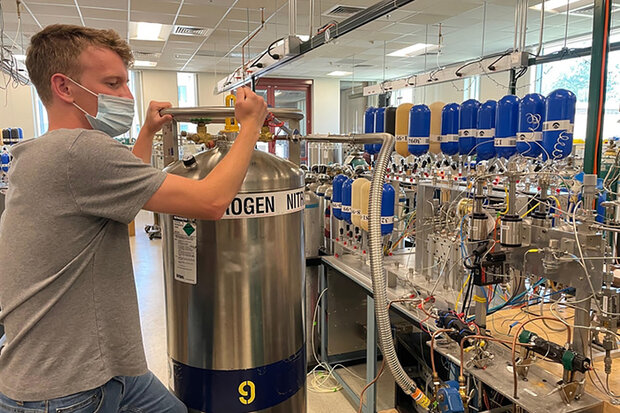New analysis shows microbial sources fueling rise of atmospheric methane
NOAA labs monitor multiple atmospheric gases. Credit: NOAA
The sudden and sustained rise in atmospheric levels of the potent greenhouse gas methane since 2007 has posed one of the most significant and pressing questions in climate research: Where is it coming from? Fossil fuel emissions? Biological sources? A diminished capacity by the atmosphere to break down methane? A climate tipping point?
The question has been the subject of intense scientific interest for a decade. Now a research team led by Xin Lan, a CIRES scientist working at NOAA’s Global Monitoring Laboratory, has tested the leading theories for surging methane levels by analyzing the stable carbon isotope ratios (δ13C-CH4) from methane captured in a large set of global air samples to determine if one of the theories is more feasible than the others. Their paper was published in the journal Global Biogeochemical Cycles.
Lan said the data pointed to microbial sources, such as natural wetlands, shallow lakes and rivers, and human-managed sources like livestock, landfills, rice paddies, and wastewater treatment.
Read more at the link below.
